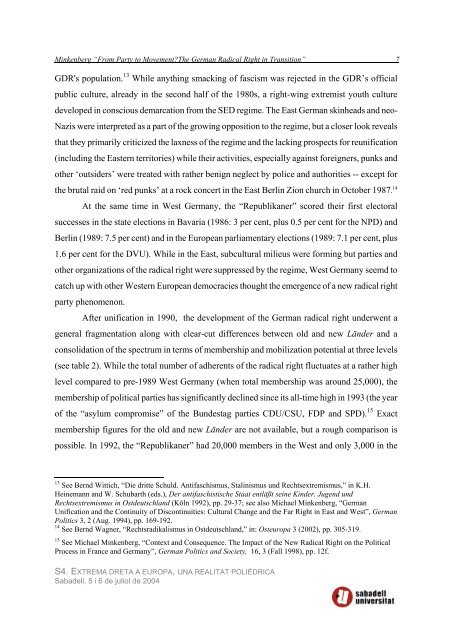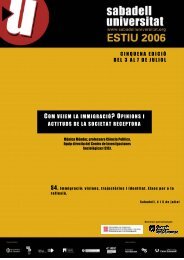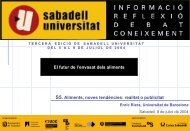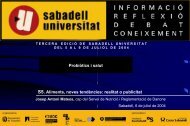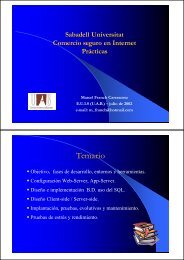From Party to Movement? The German Radical Right
From Party to Movement? The German Radical Right
From Party to Movement? The German Radical Right
You also want an ePaper? Increase the reach of your titles
YUMPU automatically turns print PDFs into web optimized ePapers that Google loves.
Minkenberg “<strong>From</strong> <strong>Party</strong> <strong>to</strong> <strong>Movement</strong>?<strong>The</strong> <strong>German</strong> <strong>Radical</strong> <strong>Right</strong> in Transition” 7<br />
GDR's population. 13 While anything smacking of fascism was rejected in the GDR’s official<br />
public culture, already in the second half of the 1980s, a right-wing extremist youth culture<br />
developed in conscious demarcation from the SED regime. <strong>The</strong> East <strong>German</strong> skinheads and neo-<br />
Nazis were interpreted as a part of the growing opposition <strong>to</strong> the regime, but a closer look reveals<br />
that they primarily criticized the laxness of the regime and the lacking prospects for reunification<br />
(including the Eastern terri<strong>to</strong>ries) while their activities, especially against foreigners, punks and<br />
other ‘outsiders’ were treated with rather benign neglect by police and authorities -- except for<br />
the brutal raid on ‘red punks’ at a rock concert in the East Berlin Zion church in Oc<strong>to</strong>ber 1987. 14<br />
At the same time in West <strong>German</strong>y, the “Republikaner” scored their first elec<strong>to</strong>ral<br />
successes in the state elections in Bavaria (1986: 3 per cent, plus 0.5 per cent for the NPD) and<br />
Berlin (1989: 7.5 per cent) and in the European parliamentary elections (1989: 7.1 per cent, plus<br />
1.6 per cent for the DVU). While in the East, subcultural milieus were forming but parties and<br />
other organizations of the radical right were suppressed by the regime, West <strong>German</strong>y seemd <strong>to</strong><br />
catch up with other Western European democracies thought the emergence of a new radical right<br />
party phenomenon.<br />
After unification in 1990, the development of the <strong>German</strong> radical right underwent a<br />
general fragmentation along with clear-cut differences between old and new Länder and a<br />
consolidation of the spectrum in terms of membership and mobilization potential at three levels<br />
(see table 2). While the <strong>to</strong>tal number of adherents of the radical right fluctuates at a rather high<br />
level compared <strong>to</strong> pre-1989 West <strong>German</strong>y (when <strong>to</strong>tal membership was around 25,000), the<br />
membership of political parties has significantly declined since its all-time high in 1993 (the year<br />
of the “asylum compromise” of the Bundestag parties CDU/CSU, FDP and SPD). 15 Exact<br />
membership figures for the old and new Länder are not available, but a rough comparison is<br />
possible. In 1992, the “Republikaner” had 20,000 members in the West and only 3,000 in the<br />
13 See Bernd Wittich, “Die dritte Schuld. Antifaschismus, Stalinismus und Rechtsextremismus,” in K.H.<br />
Heinemann and W. Schubarth (eds.), Der antifaschistische Staat entläßt seine Kinder. Jugend und<br />
Rechtsextremismus in Ostdeutschland (Köln 1992), pp. 29-37; see also Michael Minkenberg, “<strong>German</strong><br />
Unification and the Continuity of Discontinuities: Cultural Change and the Far <strong>Right</strong> in East and West”, <strong>German</strong><br />
Politics 3, 2 (Aug. 1994), pp. 169-192.<br />
14 See Bernd Wagner, “Rechtsradikalismus in Ostdeutschland,” in: Osteuropa 3 (2002), pp. 305-319.<br />
15 See Michael Minkenberg, “Context and Consequence. <strong>The</strong> Impact of the New <strong>Radical</strong> <strong>Right</strong> on the Political<br />
Process in France and <strong>German</strong>y”, <strong>German</strong> Politics and Society, 16, 3 (Fall 1998), pp. 12f.<br />
S4. EXTREMA DRETA A EUROPA, UNA REALITAT POLIÈDRICA<br />
Sabadell, 5 i 6 de juliol de 2004


